M. C. Ramos and F. Martínez de Toda
The objective of this research was to analyze the potential effect of climate change on phenology and berry composition of the variety Tempranillo cultivated in areas of the Rioja DOCa (Spain) with different climatic characteristics. Three zones were selected within the DOCa, which were located at elevations between 325 and 650 m a.s.l. Phenology and the evolution of berry composition during ripening was analyzed for the period 2008-2018. This information included the dates of the phenological stages H (separated flowers), M (veraison) and maturity (based in a fixed value of the probable alcoholic degree (PVAD)). Regarding grape composition, pH, total acidity, malic acid, total anthocyanins, total polyphenols index and colour intensity, recorded in two plots at each location were analysed. The climatic conditions recorded during the period of study were evaluated from meteorological stations located close to the vineyards. The average predicted changes in temperature (maximum and minimum) ,in precipitation and in solar radiation, under two Representative Concentration Pathway (RCP) emission scenarios (RCP4.5 and RCP8.5) and simulated using an ensemble of 10 models were analyzed by 2050 and 2070 for each zone. These data were obtained using the MarkSim™ DSSAT weather file generator. The relationship found at present between climate characteristics and the phenology and grape composition were considered in order to project the changes under climate change.
The prediction for different scenarios showed an increase of temperature higher in the warmer than in the cooler area, and changes in average precipitation, which although being small will contribute to increase water deficits. The results indicated a projected increase in temperature of more than 3 and 2 ºC, respectively, in the maximum and minimum temperatures in the months of July and August under the RCP4.5 scenario and up to 3.9 and 3ºC respectively for the RCP8.5 scenario (Table 1).
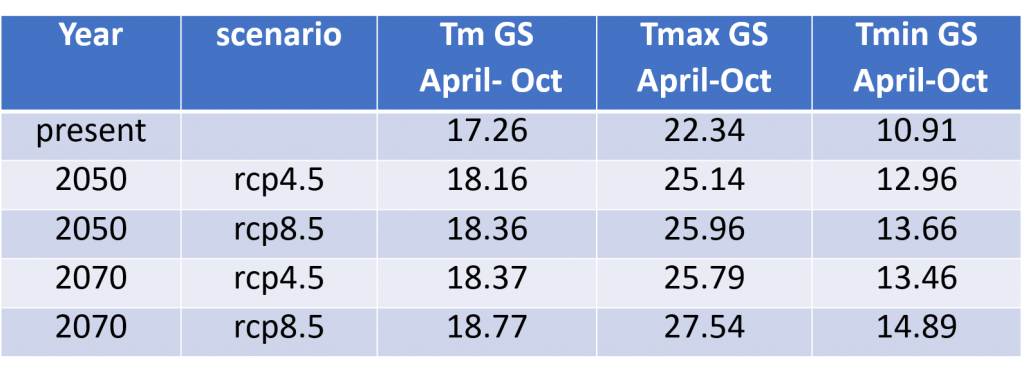
Accordingly, all evaluated phenological stages are expected to suffer an advance, which will be higher for veraison and maturity than for the stage related to flowering. The advance of the stage H, M and maturity for the three zones by 2050 could be up to 5, 8, and 12 days, respectively under the RCP4.5 emission trajectory, and up to 8, 12 and 15, respectively under the RCP8.5 emission trajectory (Table 2). The predicted advances indicate that the differences in timing that already exists between zones will be maintained or even increase, which will imply reaching maturity in the second half of August in the warmer area and in earlier September in the coolest one.
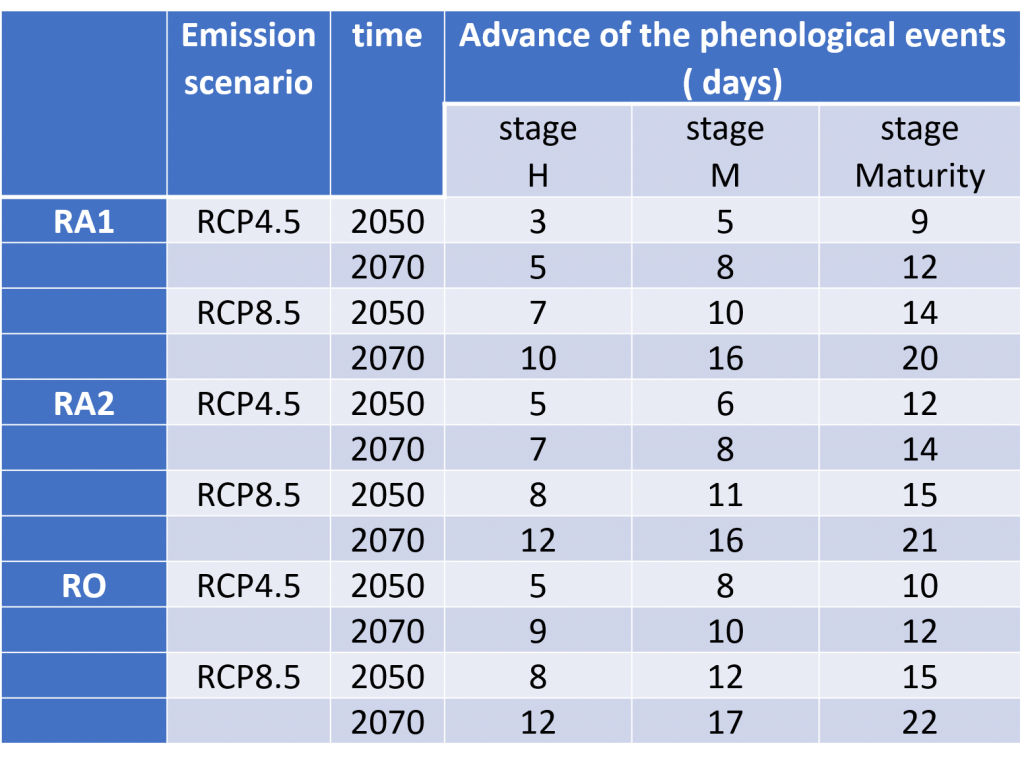
Grape composition could also suffer changes, reaching the required PVAD earlier with a decoupling between anthocyanins and sugars and with lower acidity caused by the increase of temperatures. In addition to the effect of temperature, changes due to increased water stress are also predicted (Table 3). Depending on the area, the scenario and the year, the total acidity will decrease between 0.9 and 2.6 g L-1 and the malic acid will decrease between 0.6 and 3.3 g L-1 due to the increase in temperatures. Total anthocyanins will decrease up to 158.0 mg L-1 due to increased temperatures but will increase between 38 and 117 mg L-1 due to increased water stress, so said water stress will offset the negative effect of high temperatures. The total polyphenol index will increase between 4.0 and 16.0 units due to the effect of higher temperatures and between 2.1 and 8.3 units due to increased water stress.
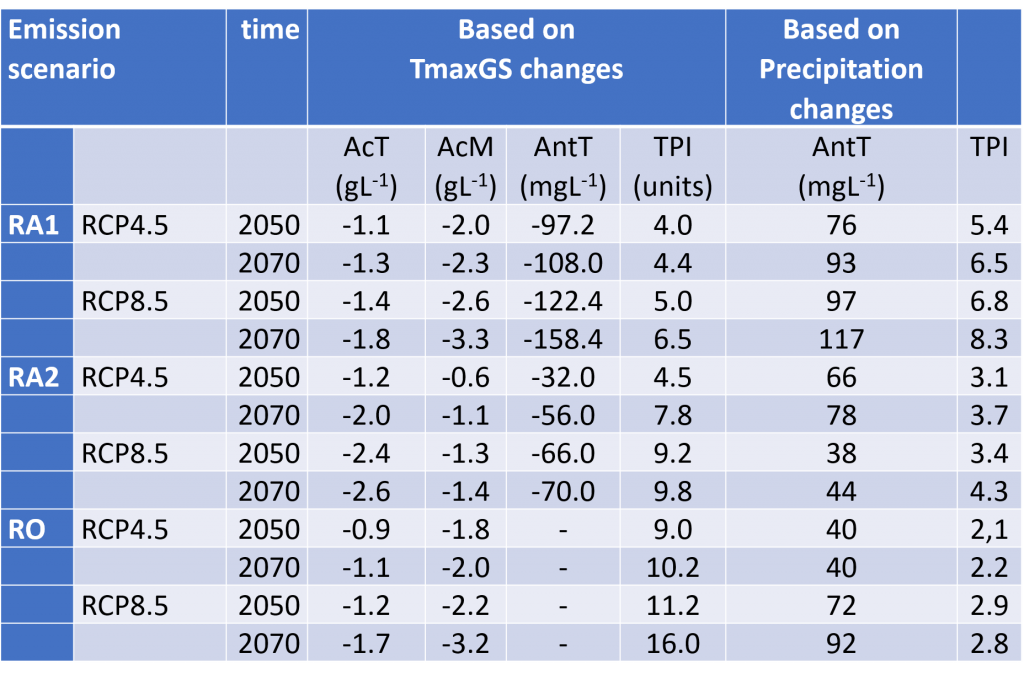
In relation to these projected advances in the ripening of the grape, it seems interesting to study and develop new viticultural techniques of canopy management with the aim of delaying ripening so that, under the future climatic conditions, the grapes ripen under similar temperatures to the current ones. Various management techniques have been proposed, in Rioja and with “Tempranillo” variety, for delaying grape ripening, such as late winter pruning, shoot trimming and minimal pruning. Each of these techniques allows delaying the ripening of the grape between 15 and 20 days. Another technique capable of delaying ripening up to two months, and also studied in Rioja and in the Tempranillo variety, is the forcing vine regrowth.
More information:
Ramos, M. C., Martínez de Toda, F., 2020. Variability in the potential effects of climate change on phenology and on grape composition of Tempranillo in three zones of the Rioja DOCa (Spain). European Journal of Agronomy, 115, 126014. https://doi.org/10.1016/j.eja.2020.12601.
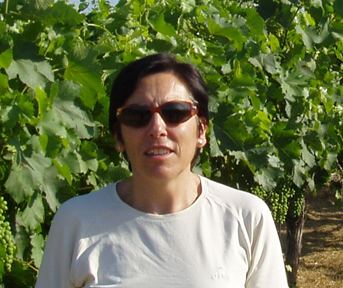
María Concepción Ramos is Professor in the Department of Environment and Soil Sciences at the University of Lleida, and joined to Agrotecnio (Centre for Research in Agrotecnology). She develops teaching activities in the School of Agrifood and Forestry Science and Engineering in different subjects related to environmental management. Her research activities are carried under the group of “Agronomy and environment in Agricultural Systems of Mediterranean Zones”. Her research focus on two main lines: a) climate variation and its influence on vine development and grape quality, and b) soil hydrological processes soil and water conservation. She has participated in 20 research projects, being the leader in most of them and she is author or co-author of 100 publications in scientific journals and of more than 45 publications on books.
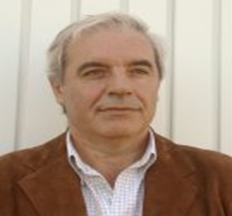
Fernando Martínez de Toda Fernández, Professor of Viticulture, University of La Rioja, Institute of Vine and Wine Sciences, E-mail: fernando.martinezdetoda@unirioja.es
Fernando Martínez de Toda Fernández is, in addition to Viticulturist, Professor of Viticulture at the University of La Rioja and researcher at the Institute of Vine and Wine Sciences. He develops his teaching activity in the Degree in Oenology and Master of the University of La Rioja, with 42 years of teaching experience. His research lines include the preservation and characterization of grapevine germplasm, the study of minority grape varieties and the ecophysiology of the vineyard and the quality of the grape in relation to climate change. He is the author of twenty books, monographs and book chapters on viticulture and more than two hundred scientific and technical works published in the main Spanish and foreign publications in the sector, as well as in conference proceedings. He has received four International Viticulture Awards from the International Office of Vine and Wine (OIV), Paris, in 1986, 1991, 2003 and 2008.

